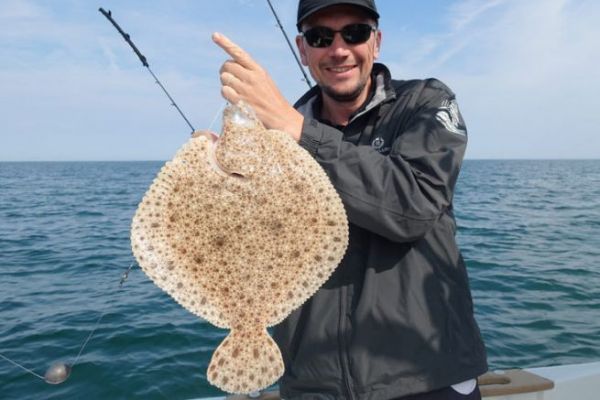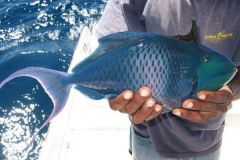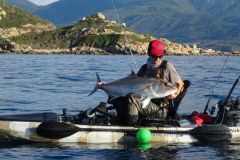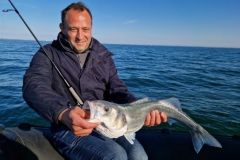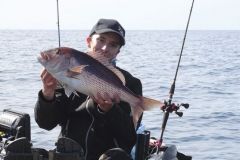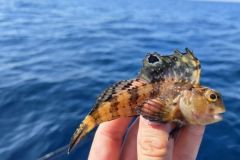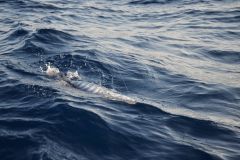Scientific name
Psetta maxima (Linné, 1758)
Morphology
Turbot is a flatfish with a circular body. Its eyes are located on the right side. Its back, i.e. its dark face, has small spikes that distinguish it from other flatfish such as brill. The color of this face is brown speckled with numerous small black dots. The blind side of the turbot, where the eyes are not located, is whitish.
Fishing spots
Young turbots live on beaches. Adults are found on sandy or gravelly offshore ridens, on the gentle slope of the ridens. Turbot can be found in the North Sea, English Channel, Atlantic and Mediterranean.
Turbot fishing technique
Turbot sometimes rise to the surface, especially at night, in search of food. Good swimmers, these flatfish are capable of hunting pelagic species such as anchovy, horse mackerel or mackerel. Turbot's ability to swim and hunt makes it a formidable fighter. To target this hunter, sandeel is the number 1 bait, followed by mackerel. It's always best to track turbot along a sandy bottom, where it can be found during the day.
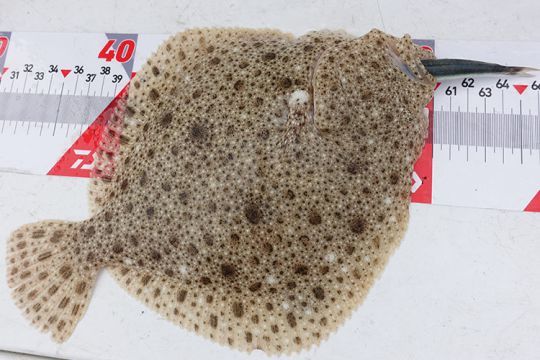
Reproduction
Turbot spawn between April and August and lay between 5 and 15 million eggs, each 1 mm in diameter. They reach adult size at 54 cm.
Size and weight
Its average size is 50 to 70 cm. It can reach 1 m for 25 kg and live up to 15 years. The French record is 9.09 kg (La Baule, 13/09/1991).
To know more
Good swimmers, turbots are capable of hunting pelagic fish. For example, they will sometimes bite a soft lure dragging along the bottom, or even a jig.

 /
/ 